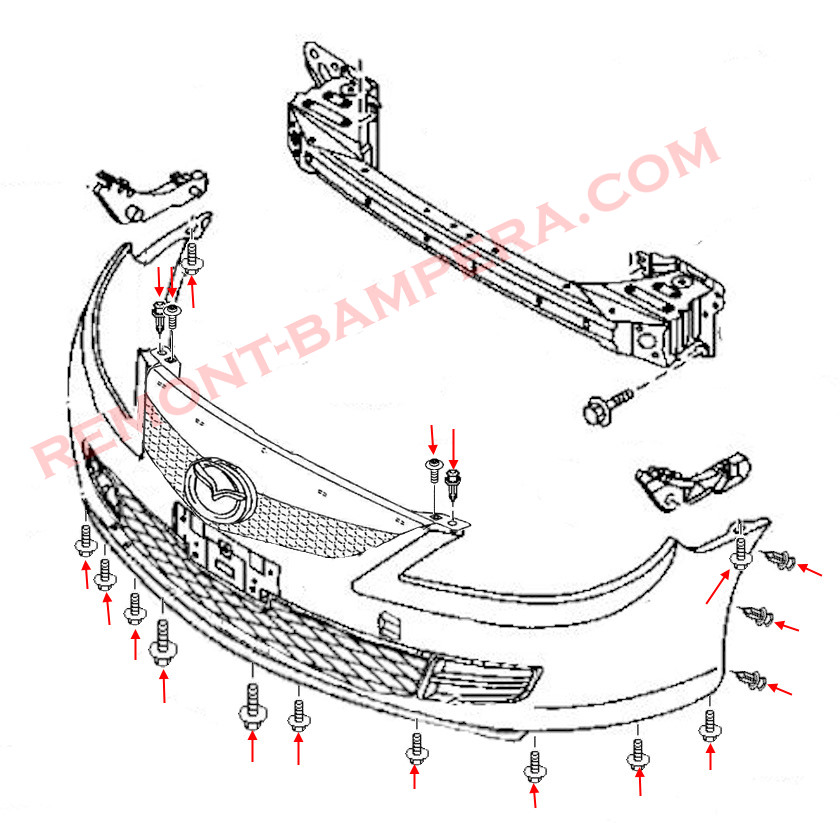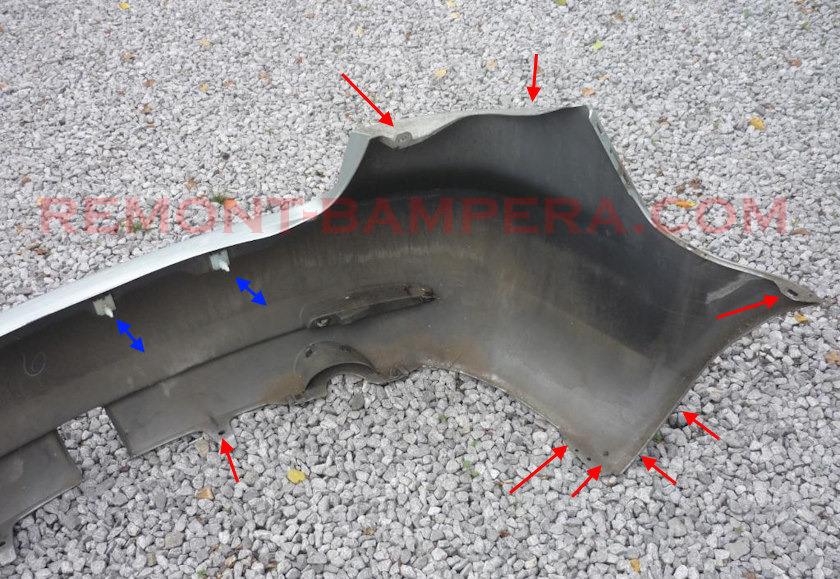Production Years and Model Code
The first generation Mazda 6 (known as Mazda Atenza in Japan) debuted in 2002, replacing the Mazda Capella/626 model. Production continued until 2008, after which the second generation (Mk2) began being manufactured. Body codes varied by type:
- GG1 - sedan (4 doors),
- GG2 - wagon (5 doors, called Sport Wagon),
- GG3 - hatchback (5 doors).
The model was based on the Mazda GW platform, which was also used for the Ford Mondeo III and Volvo S40/V50, but with significant modifications to improve handling.
Body Types and Modifications
The Mazda 6 Mk1 was offered in three body styles, which was uncommon for its time:
- Sedan (GG1) - the most popular version, especially in North America and Asia.
- Wagon (GG2, Sport Wagon) - featured an enlarged trunk (from 519 to 1719 liters with seats folded) and sporty design.
- Hatchback (GG3) - a less common but practical variant with a dynamic silhouette.
In Europe and Russia, the wagon and hatchback were more common, while the sedan was in higher demand in the US and Japan.
Bumper Plastic Marking: >PP+(S22+T18)<
How to Remove Front Bumper
- Open and secure the hood.
- Under the hood, unscrew two bolts and remove two clips securing the upper part of the front bumper (radiator grille).
- From underneath, unscrew ten (twelve) bolts screwed upward from below (note: bolts are of different sizes).
- Alternately turn the front wheels inward into the wheel arches.
- In wheel arches, remove three (two) clips on each side that secure the fender liners to the bumper.
- Bend fender liners aside and unscrew two bolts (one per side, screwed upward from below) that secure the corners to the fenders.
- Release latches in fenders (grab the corner with hands and pull sharply toward yourself).
- (Requires two people) Remove front bumper by pulling forward (be careful not to damage wires).
- Disconnect electrical connectors (if present).


How to Remove Rear Bumper
- Open trunk lid.
- Remove two clips and take off rear panel trim.
- Free edges of side trims.
- Behind side trims, unscrew three (two) nuts per side and remove taillights.
- Under taillights, unscrew two bolts and remove two clips.
- From underneath, remove six clips (inserted upward from below) securing the lower part.
- In wheel arches, unscrew bolts and remove splash guards (if installed).
- Bend fender liners aside and unscrew one bolt per side (screwed upward from below) securing corners to fenders.
- Release latches in fenders (pull corners toward yourself).
- Release securing clips in trunk opening (marked with blue arrows in diagram, pull toward yourself. Note: when reinstalling bumper, these clips must be engaged first).
- With helper, carefully remove bumper by pulling backward (mind the wires).
- Disconnect electrical connectors (if present).


Engines and Transmissions
The Mazda 6 Mk1 came with a wide range of gasoline and diesel engines:
Gasoline:
- 1.8L MZR (125 hp),
- 2.0L MZR (145 hp),
- 2.3L MZR (163-166 hp),
- 2.3L Turbo (260 hp, Mazdaspeed6/MPS version for US and Japan).
Diesel (for Europe):
- 2.0L MZR-CD (121-143 hp),
- 2.2L MZR-CD (150-185 hp).
Transmissions: 5- or 6-speed manual, 4- or 5-speed automatic, and for Mazdaspeed6 - only 6-speed manual with all-wheel drive.
Model Description and Features
The Mazda 6 Mk1 was a breakthrough for the company thanks to its sporty design and precise handling. Engineers focused on body stiffness and low center of gravity, improving driving dynamics. The interior stood out for its simplicity and ergonomics, though materials in base versions were inexpensive.
A key feature was the reliable suspension: front MacPherson struts, rear multilink. This provided a good balance between comfort and cornering stability.
Interesting Facts
- Racing success - The Mazda 6 competed in touring car championships like BTCC (British Touring Car Championship), proving competitive.
- Mazdaspeed6/MPS - The high-performance version with 2.3L turbo engine and AWD accelerated 0-100 km/h in 6.1 seconds, but was limited due to high price.
- Brand influence - The 6's success helped Mazda shed its "budget" image to compete with Honda Accord and Toyota Camry.
- Rare versions - Japan offered a 2.0L rotary engine version (Atenza RE) that didn't gain popularity.
Conclusion
The Mazda 6 Mk1 is an important model in the brand's history, combining style, dynamics and practicality. Its legacy continues in later generations, and some examples remain on roads thanks to reliability. The GG2 wagon remains particularly sought-after in used markets for its space and handling.

 English
English  Italiano
Italiano  Français
Français  русский
русский  Deutsch
Deutsch  Español
Español